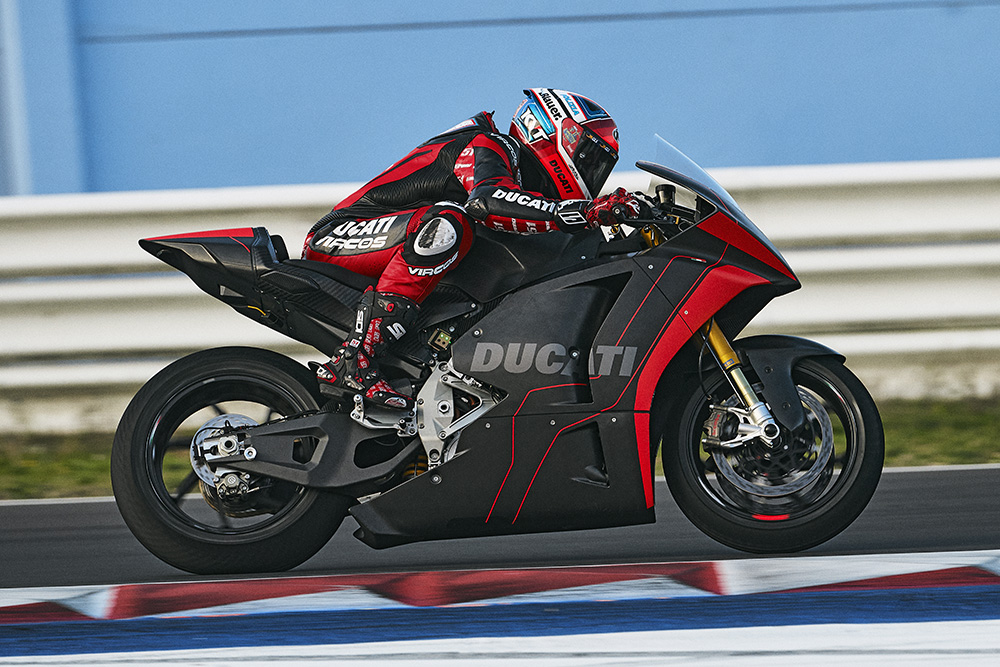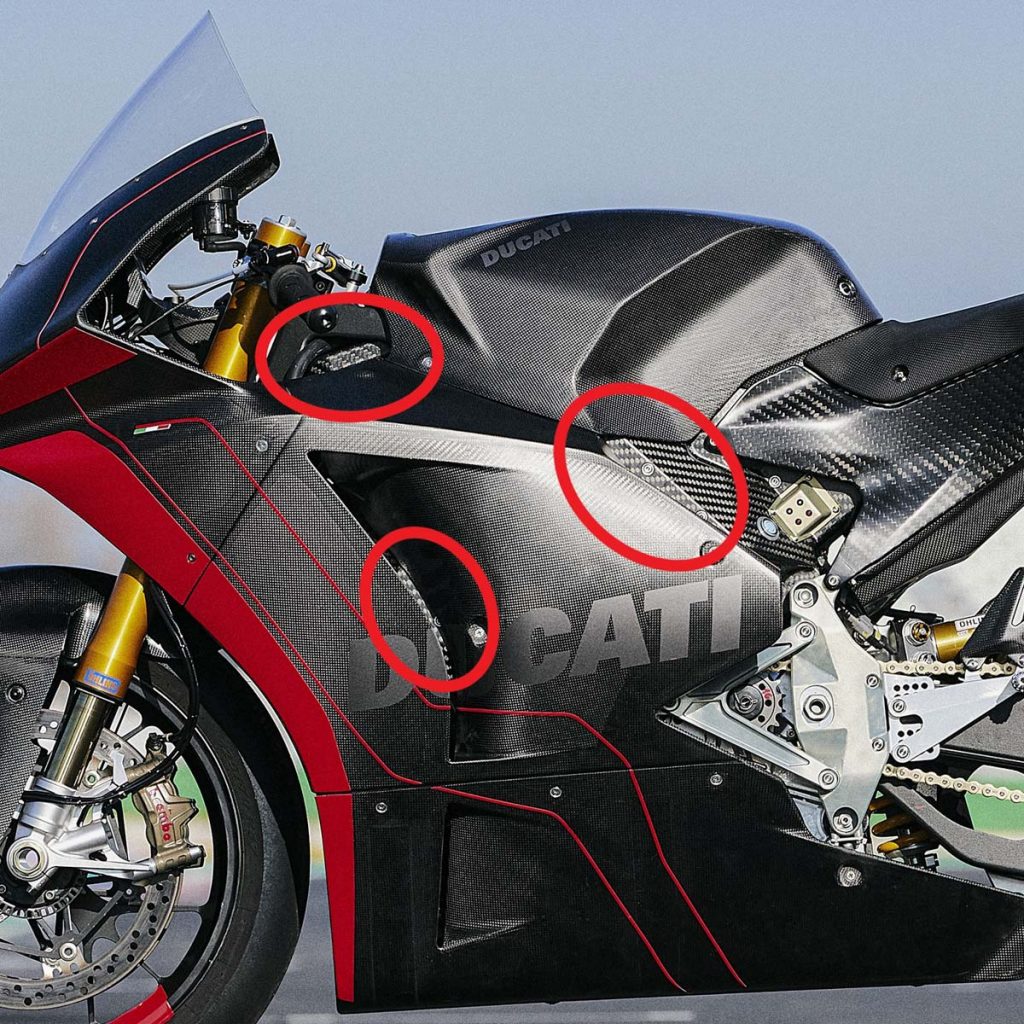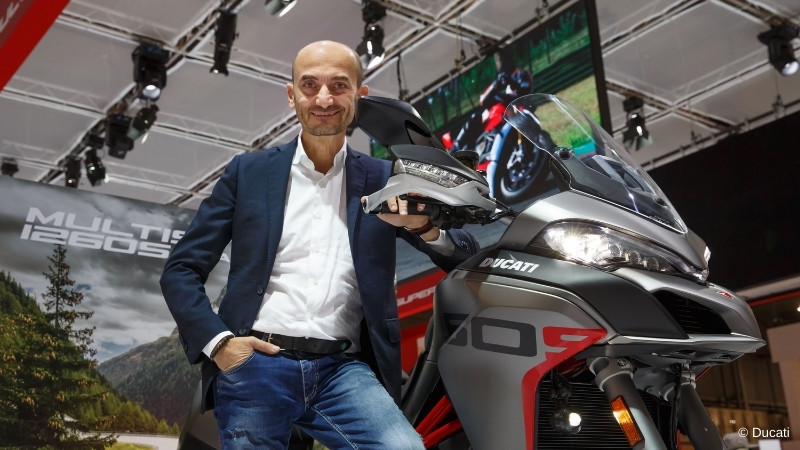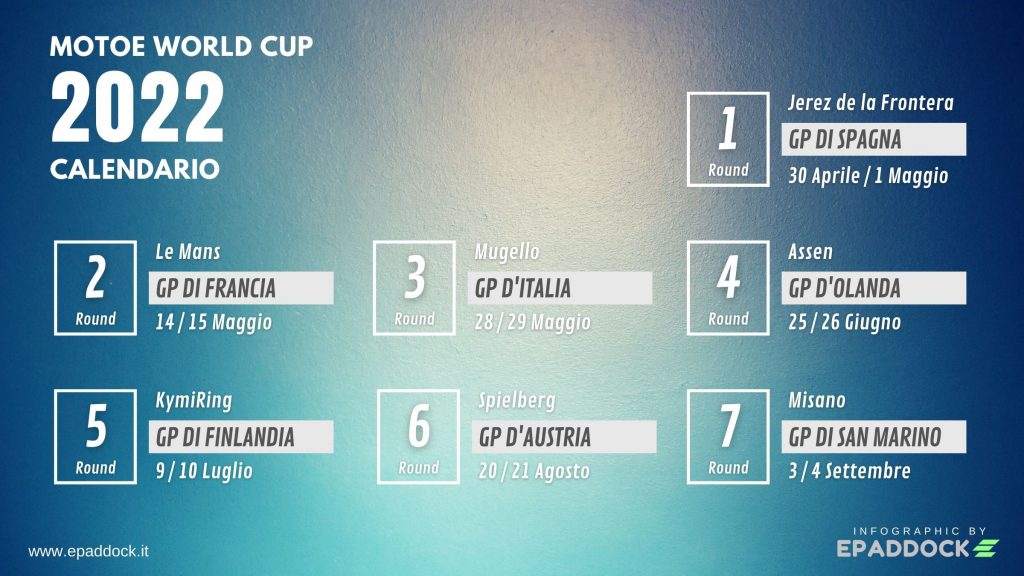
The technical analysis of the MotoE di Ducati- The Italian manufacturer presents its MotoE and brings it to the track for the first time in Misano. This is our preliminary technical analysis of the first electric motorcycle from the Borgo Panigale house based on the images received.
Ducati presented the V21L, the electric prototype with which the riders of the MotoE World Cup will run for four years, starting from 2023. No official technical data, but it is already possible to understand some of Ducati's technical choices from the photos.
The most critical challenges in developing an electric racing motorcycle remain related to the size, weight and range of the batteries.
So let's start by looking for the battery, which is installed in a central position where the engine is located on an internal combustion motorcycle. Carbon parts around the battery suggest a frameless design, in which the battery itself acts as a structural member.
The electric motor is at the bottom, between the rear suspension linkage and the battery itself and positioned almost vertically with respect to the pinion. The position of the shaft of the electric motor and the pinion do not coincide, a sign that a fixed ratio reduction gear is present. The images do not show the position of the inverter but the location of the charging socket suggests that it is positioned behind the battery, towards the seat post frame. This hypothesis is also supported by the motor power cables which run vertically from the inverter towards the motor.

Going back to the battery, it is immediately evident that there are no air intakes for its cooling, but instead, there is a large radiator that extends throughout the front section of the bike. The radiator is divided horizontally in two, with the lower part probably dedicated to the motor and the inverter while the upper part is for the battery cooling.
This element is the most interesting of the MotoE di Ducati. Directly asked, Claudio Domenicali, CEO of Ducati, responded that they would demonstrate the battery cooling system in 2022 but the presence of a radiator and the absence of air vents indicates that the V21L's battery is liquid cooled. It remains to be seen whether the coolant flows directly inside the battery or through plate exchangers.
The cooling of the battery is the key technical element to reach the declared focus of the project: weight containment and constant power delivery over the race.
On the chassis front, the double-sided swingarm stands out immediately, with large openings and the suspension with progressive shock linkage. In several components we see an extensive use of carbon fiber, such as for the self-supporting tail, with the aim of limiting the weight of the bike.
At the moment, there is no lever on the left handlebar to operate the rear brake, but it will undoubtedly be introduced according to the preferences of the various riders.
On the safety front, the green/red light on the sides of the bike is a must to show the bike electrically integrity and that it can be handled after an accident.
At the moment it is not possible to go further in the analysis of the Ducati MotoE but we expect further updates from the manufacturer of Borgo Panigale in the early months of 2022.
Photos: Ducati


Interview with Claudio Domenicali
The MotoE of Ducati? With a light heart


MotoE World Cup 2022
The calendar of the MotoE 2022: Mugello and KymiRing among the news

To be updated on MotoE World Cup, subscribe to Epaddock's Whatsapp broadcast and receive all our news on your mobile phone in real time: find out how here.













